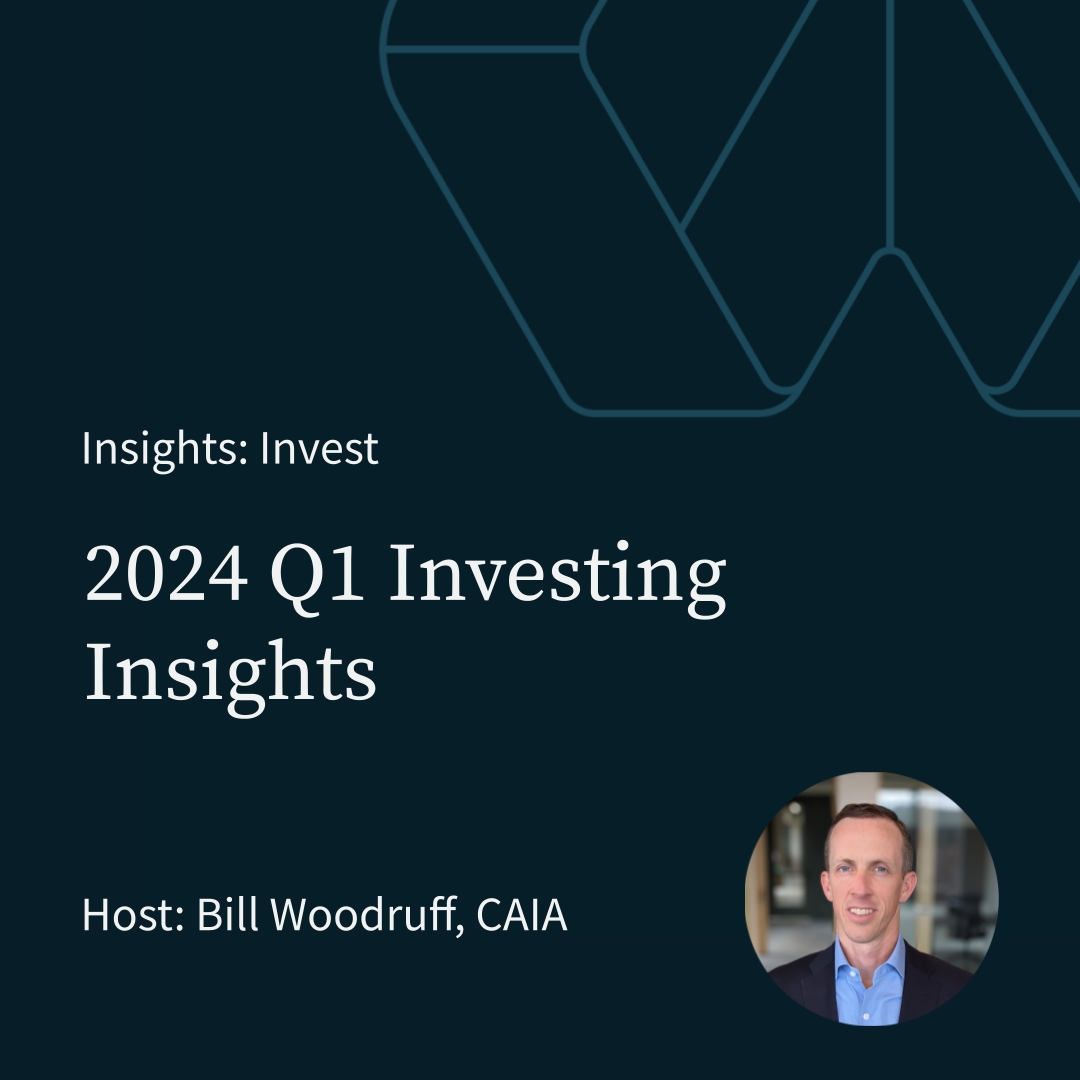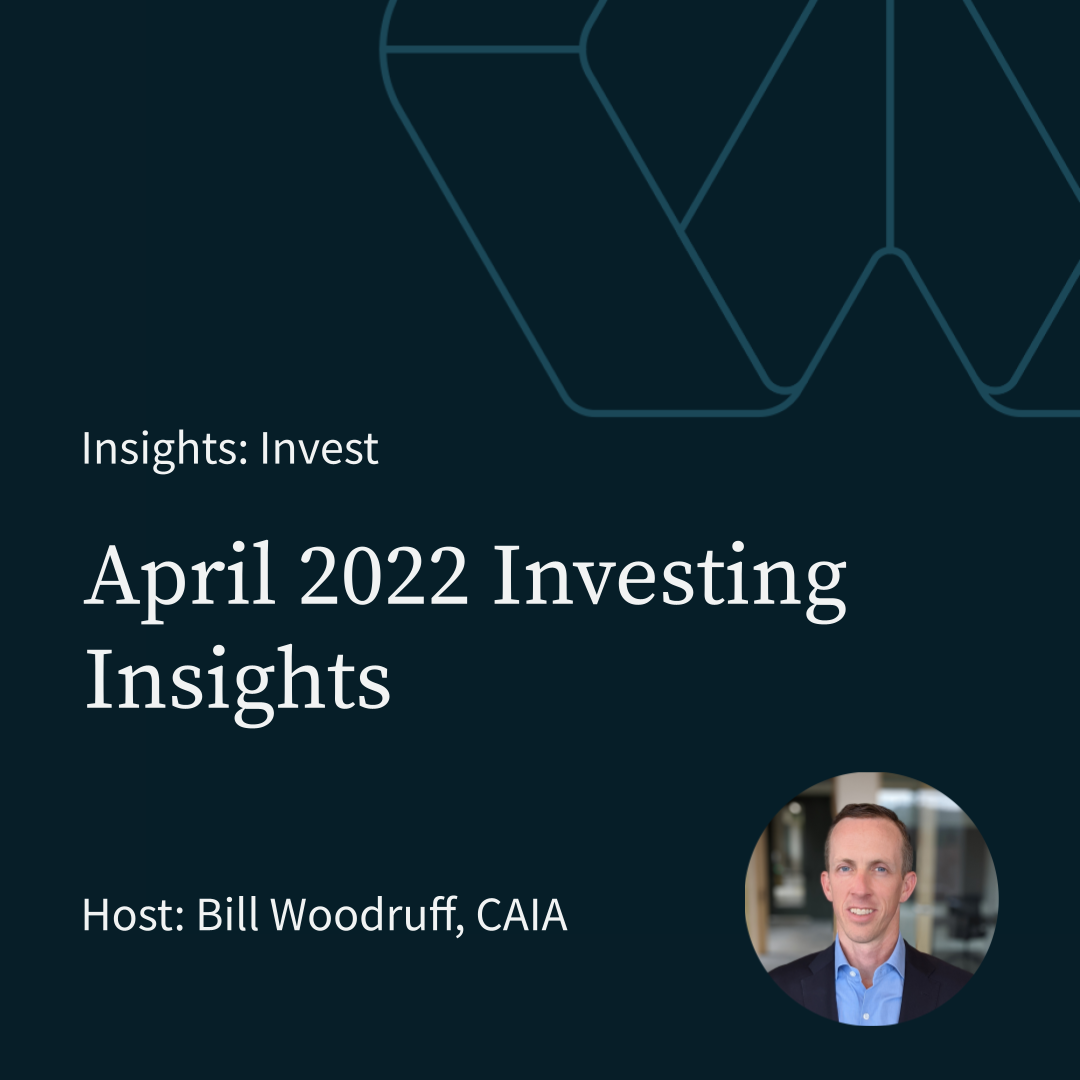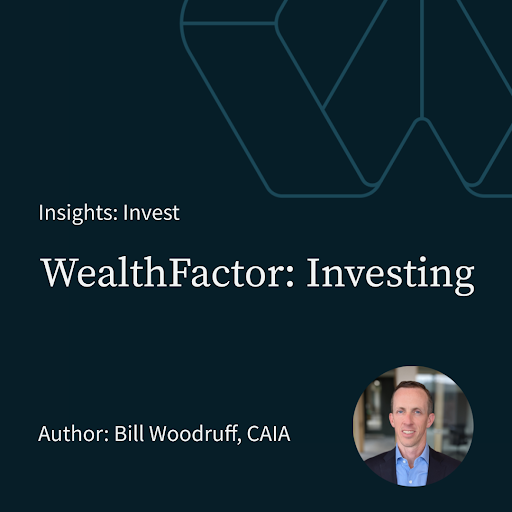WealthFactor April 2020 Review
Missed our April 2020 review webinar? You can catch the replay:
Transcript:
Good afternoon and welcome. Today we'll be taking a look at global financial markets and testing related topics with a specific focus on April of 2020. This call is for informational purposes only a maybe recorded statements made during this call or the opinions of the speaker and are subject to risk and uncertainties, some of which are significant in scope. And by their very nature beyond the control of well factor. There could be no assurance that such statements will prove to be accurate, and actual results in future events could differ in a material way from said statements. Historical results are not necessarily indicative of future performance. For those of you who do not know me or don't know me, Well, my name is Bill Woodruff. I founded well factor in 2017. I have over 20 years of investing related experience that really started out prior to the tech bubble bursting in the late 90s. My investment career is diverse done trading for a hedge fund done manager research and due diligence across a variety of manager types I launched and managed a mutual fund as well as other fun types. That mutual fund business line was acquired by a public company all of that is led to well factor. So well factor is a Lake Oswego based investment advisor. We provide custom plan focused investment advice we offer that service through managed custom portfolios, predominantly index based or client accounts are held in their individual names at a third party independent custodian we charge point three 5% on assets for our full investment advice service up to 10,000,000.1% thereafter, we also offer a advice light service, which is Is our direct indexing. So to give maybe a just a quick top level level feel of what how we think, at well factor our philosophy we call risks smart. And there are key three key aspects to risk smart being portfolio smart. Or another way to think about this as being structurally efficient. For us. That's really about avoiding things things like picking and timing, my belief that it's difficult if not impossible to outperform indices or markets, gross of fees, and then once you add layers of fees, increased fees, the probability just continues to go down from there. Another element is avoiding layers as well as complexity. I believe both of those things lead to additional fees and costs, and ultimately increase risk taking, which is in nobody's interest. The next element is fee smart. We charge point three 5% and then By utilizing index based investing, we're really not layering on a dramatic additional amount of costs or fees feet being fee smarter fee efficient. It's my belief that it makes sense to pay for investment advice and investment related services. But after a certain point, those increased fees and costs will start to be a detriment to to the probability of success. The last element is tax smart. Our direct index based investing allows for a significant amount of individual account specific tax optimization, whether that's through strategies such as gains deferral, or specific tax loss harvesting strategies. What am I going to go through today, while April was a, you know, a month that I think a lot of people weren't expecting. q1 was clearly a surprise as well, in a lot of a lot of ways, you know, in terms of our clear impacts to The global economy and the US economy from those forced isolations. In April, we saw the markets snap back dramatically. And here a lot of people asking the question, Well, you know, what, why is that happening? Well, you know, it's clear that there's going to be real issues going forward for the economy. So today, I've identified five different elements I'm going to spend some time on, you know, the first element in which is persistent in equity markets is markets move and price things in very, very quickly. Perhaps there's a case to be made that's happening faster than ever before. That certainly can be true. And there's certainly some evidence that might point to that, at least as a single data point in the first quarter where we saw the most rapid decline in prices historically. So the second element in terms of why did it why was April such a strong upward movement and why we see such a strong upper moving prices, swift action by the Federal Reserve Bank number three swift action by the federal government or we saw we saw Especially after the first week or so of April, evidence that suggested that social distancing practices were in fact flattening the curve and perhaps reducing the extreme negative outcomes that were feared in the first quarter of the end of first quarter.
05:15
And then lastly, five also was supportive to price increases and April was optimism that there might be a cure or vaccine for the Coronavirus, ultimately leading to maybe a reduced reduction in the fear or risk that we might have a this be a perpetual challenge or issue. So, you know, the most important one here though, for me is when equity markets declined 30 plus percent in the first quarter that was pricing in an incredible amount of negative future potential that unwound a bit as we saw prices go back up. And then lastly, I'll look at today performance. You know, I can see sistent Lee believe that we shouldn't look read too much into short term moves in prices. And so I typically whenever I share performance for information, we'll look at it in a longer term context. I'll start off with swift action by the Fed, the federal government's actions really took center stage in the media and most people's focus, but the Fed did its part and did so really quickly, you know, restarting unlimited asset purchasing programs and including assets that it did not include in the financial crisis, most notably ETFs for corporate investment grade bonds, as we look at and try to answer this question, why was APR such a strong period? Well, you know, things are very scary at the end of the q1 and then a very short amount of time there's a significant amount of support that's coming behind asset prices in general unlimited asset purchasing program certainly leads the The way here, but you know, they're restarting talf and other various different facilities to support financial markets. And then also, you know, another thing that's worth noting and it's not necessarily fed specific is that the average bank or a balance sheet is in far better condition or wasn't far better condition going into this. Whereas the banking area or sector of the world was really at the root cause of the problems for the financial crisis, different situation, there's really no lag in response, unlike the financial crisis. So number one swift action by the Fed swift action by the federal government, there's a there's a clear potential interruption to growth and the federal government steps in with an enormous amount of financial support. You know, of course, that's going to be clumsy. You can't do something with an incredibly complex economy on very short notice that's not going to have some issues and you know, has been some missteps. But generally, you know, 2.4 plus trillion dollars being injected into various different elements of the US economy is going to be supportive of price in riskier assets, in general and supportive of the economy, at least in some way. In the short term. It's to be determined what the long term impacts of this sort of thing are, or the thing that we might be observing over time. And it's just two data points, I guess, so far right with the financial crisis, and now this Coronavirus, linked situation is the, you know, is probably a net positive for the whether it's the Fed or the federal government to step in, and be that backstop and make sure that our financial systems continue and there and we remain confident in our system that we can go and do what we what the US has always done, which is go out and innovate and work hard. And so there's some additional data in here. That's interesting. You know, puts That amount of stimulus into context relative to GDP. So 2.4 trillion is approximately 12% of GDP. That's an enormous amount. And, you know, another on this top right graph, I think is pretty interesting. It you know, once you get past 2020, these are forecasts right, which there's always going to be some uncertainty around that, but that shows the the deficit levels considering this incredible amount of stimulus. And then on the bottom graph here is showing some some context around you know, estimates future looking for what that looks like on a relative to GDP basis. You know, these elements may have an impact on the short term or short term fixes. The point point number three is Coronavirus curve flattening, again markets move really quickly and so in in the tail end of the first quarter, they were pricing in some really scary outcomes for the Coronavirus and so in Have you know after the first week of April as the pace of which in which the Coronavirus, number of confirmed cases and fatalities starting to flatten and, and perhaps even declined to some degree, that was a relief to market to markets and asset prices in general, and was treated as a positive again, markets price things in really, really quickly, really builds on the case that investors should attempt to avoid making decisions in the short term relative from an investment perspective. And relative to how they think about the future, largely because of how fast asset prices are factoring in the information that we think we know. The last element I'll spend some time on today is looking at some of the returns. And the biggest thing that I think that's worth spending time on is the continued divergence, and it's been 10 or 12 years factor or style based divergence and prices. And so a lot of focuses on the s&p 500 or the Dow Jones Well, those are really Really a subset. While they're the largest companies and represent the largest parts, us, the US stock market, there really are quite a few other elements and thousands of other companies that aren't included in that. The what we've seen is large and growth oriented companies really snap that really quickly from its perspective. And and if you look back over the last 10 or 12 years, those are the sorts of companies that really led the very strong performance and we continue to see whether it's, you know, if you're the opposite end of the that factor spectrum too small and value, you see small and value really lagged over the last 10 to 12 years, and then you know, also is still you know, negative significantly despite what was very strong performance. And so this top left group of data here, it shows the performance for April even though it's listing quarter today, April is the entire second quarter so far through the end of April. And you can see there's a strong recovery across the board. But you can see even including that recovery where large growth is almost back to even large blend, which is a better representation of the s&p 500 is still down almost just about 10%. In other areas of the market are notably off quite a bit more on a year to day basis. And that's, you know, there's a logic behind that, right, where, you know, smaller companies are not going to have the significant economic resources to continue or more of them are going to come under strain or stress in a prolonged period where there's a reduced or eliminated area, amount of economic activity, so I persistently don't think investors should focus too much. Looking back on performance, I think that is the highest probability of success is attempting to ignore this information. You know, can we draw some longer term conclusions, perhaps more. So I think that's just reminders of what not Do and as i as i think that on the last 20 plus years, really investors have been rewarded by not chasing after what did really well yesterday. If anything, I'm looking at a portfolio today and saying I want to be neutral in terms of my growth, my large growth versus my small value, and it's not the time to be ignoring the areas that perhaps haven't performed as well in recent past. I appreciate you guys tuning in, and I intentionally keep these monthly updates short.










